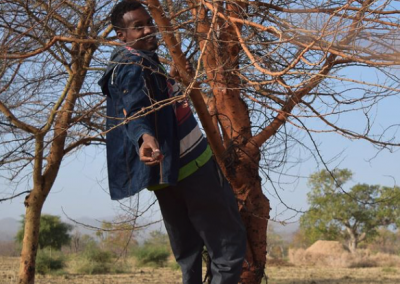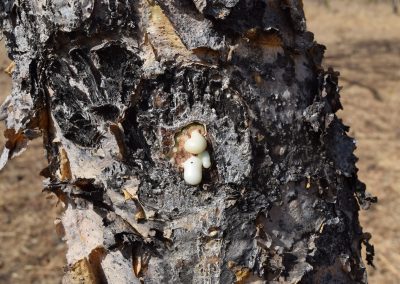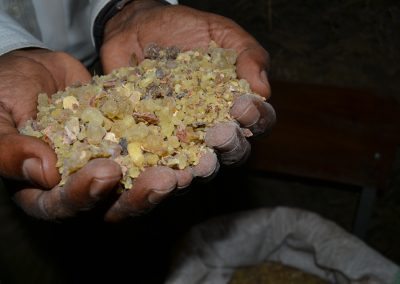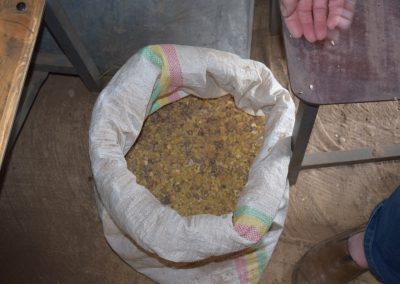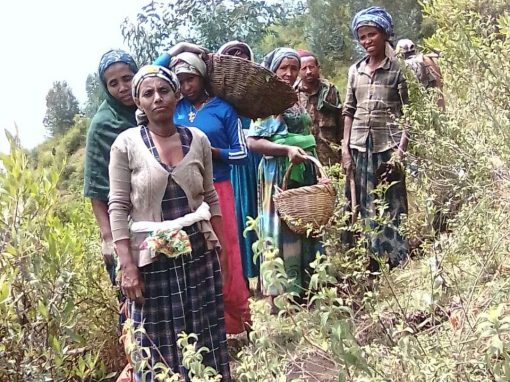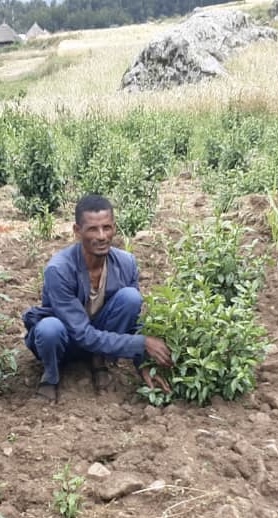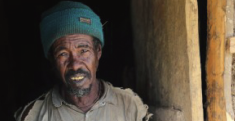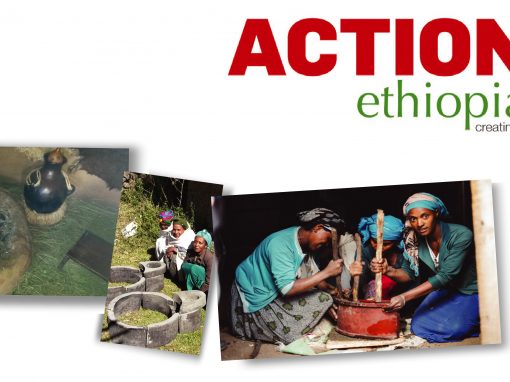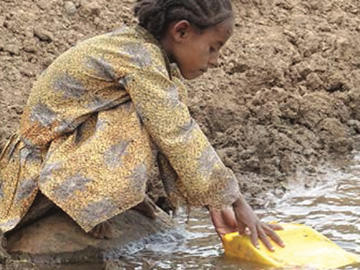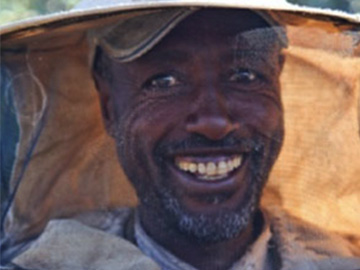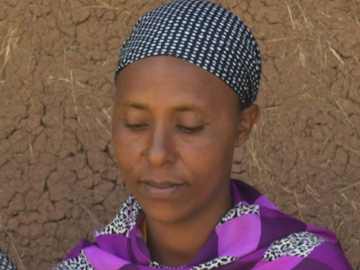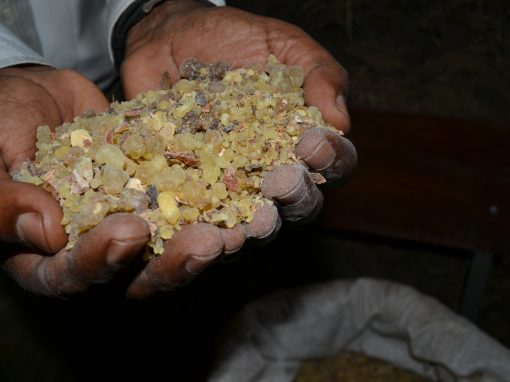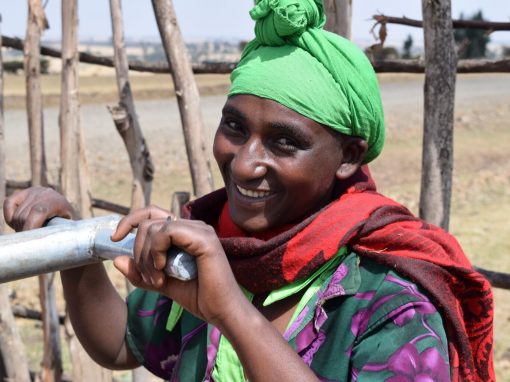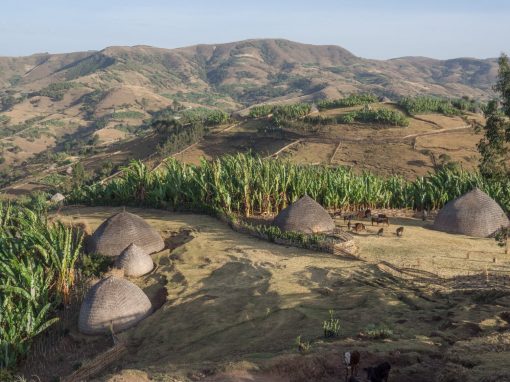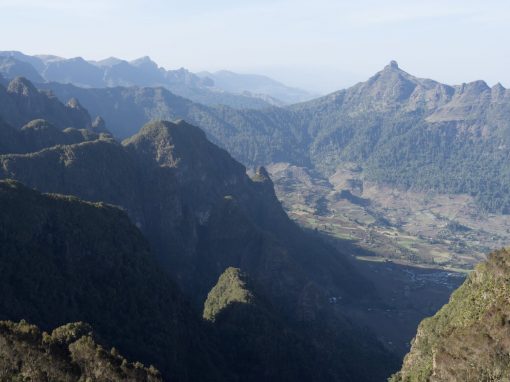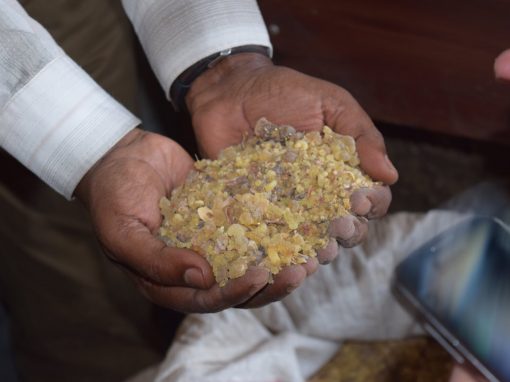Frankincense: Once more valuable than gold…
Does money grow on trees?
Mohammed Ali lives in Das Gundo village near Metema in Northwest Ethiopia in a roundhouse not unlike this one. He is 43, married with four children and supports another two adults financially. His income before he learned about Frankincense was £1,048 per year, that’s £2.88 per day
to feed and look after six people. That’s not much is it but with daytime temperatures at over 40 degrees centigrade and no rain nothing grows and livestock have little to eat, so its very tough. Out of desperation, he joined a newly formed group of people set up by our sister organisation called
SUNARMA that aimed to help the village look after the thorn forest that surrounded the settlement, protect it from outsiders and destruction by locals and learning how to methodically and expertly harvest frankincense. Mohammed couldn’t believe it; he knew about the tree and had previously even got roving workers to harvest the trees in the forest near where he grazed his cattle. It had yielded pocket money; the day labourers had damaged the trees which meant they produced practically no frankincense.
Anyway, he joined the group, which called itself the Das Participatory Forest Management Cooperative. Over several weeks Mohammed was taught how to care for the Boswellia trees. This included three years of tapping, and one year of rest for each tree, he learned how to tap with a special tool, how to harvest and how to grade and store.

